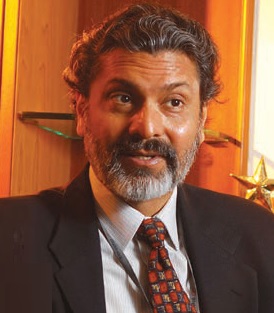How to integrate HR into business

As mentioned at the beginning of the story, it is time for HR to become integrated with business. However, there exists a very wide gap between the CEOs expectations of the CHROs and what the CHROs have to offer, as was revealed in the People Matters State of the CHRO Study 2015. CEOs expect HR to be exposed to functions outside HR, specifically sales and finance, and they also seek willingness from the CHRO to take up non-HR projects. It is critical for HR to fulfill these expectations from business leaders to effectively integrate and forge a partnership with businesses. It can be achieved by:
Building HR’s business capability
55 percent of CHROs have not led a function outside the HR role, and a mere 10 percent have led a sales role, according to our State of the CHRO Study 2015. Clearly, business exposure of the HR is lacking, which often results in a deficit of business capability.
HR must drive its own career mobility by making a case of establishing an HR career mobility strategy within the organization. The easy part is making a business case of HR’s career mobility – because that is something CEOs also want. It is only a case of having the will to self-drive your career progression and look beyond HR-only roles. According to Dr Ashok Balyan, CEO of Reliance Group's Oil & Gas Business, “To build business competence, HR leaders must talk business language and must understand all important aspects of business including finance, technology, etc.”
Trainings and learning interventions can help, but only to an extent; the real capacity building happens when it is experienced on the ground. And that is what the HR of today needs to do for tomorrow.
Keep in tune with business strategy
There is a dire need for HR to be agile, flexible, be a key member in business strategy formulation, keep abreast with changes in the business strategy and keep aligning the people strategy with the business strategy. However, according to State of the CHRO Study, 61 percent CHROs said they struggle with aligning HR strategy to company strategy. To curb that, HR has to constantly communicate, be an active part of every business conversation, be an active listener, observer and opinion-giver as well. HR has to proactively participate in business and devise people strategies for the future. Veena Swarup of EIL corroborates the fact by saying, “HR has to improve its own thoughts and styles of working, and it then needs to set a strategic agenda in tune with the business agenda. So if an organization has a business strategy for 2020, HR also needs to have a people strategy for 2020, aligned with that strategy.”
Be proactive
HR also needs to be proactive and keep aligning its key HR levers to the future trends. So HR will have to fine tune its strategy for the nature of work it foresees in the future, the kind of talent businesses will need and hire, the expectations both employees and candidates will have, etc. For example, a large proportion of talent in the future might comprise of flexible workers (because of the inception of volunteerism in organizations); so the HR needs to be prepared with a blueprint of how it will recruit and manage that talent. The organizations wherein the HR has the foresight for future business requirements and can devise and execute a talent strategy attuned to the same, are likely to have an edge over others.
The prerogative is not only with the business leaders to ask HR to align with the future business needs – that role can be reversed as well. HR can ask businesses to think of a business strategy revolving around how the former foresees the future of workplace and workforce.
HR can now show significance to business
An able enabler of the HR function has been technology. The entry of technology in HR, particularly Analytics, has made the function more data-oriented, and that has enabled HR to show value-add, which has empowered the function to get a buy-in from business. Now HR can both build business cases for the strategic HR levers, and also show business significance. As the HR technology ecosystem matures, HR levers’ (both hard and soft) indulgence in business will become even more potent; it is upto the HR function now to develop Analytical capability.
The HR function may have struggled for getting a seat at the table, but now it has become the centre-piece. In fact, it now has a huge weight of business expectations on its shoulders and business leaders are looking at the HR function to guide and drive organizations forward. And businesses and HR will have to be integrated to stay afloat the forthcoming curve(s).
HR should develop business capability

Veena Swarup, Director (HR), EIL
HR has to undergo career mobility itself, and experience business processes
Companies (and HR) have to develop agility in the workforce, and also bring in talent tangibility to the extent possible. To make the workforce equipped for change and uncertainty, HR needs to give a lot of impetusto multi-disciplinary capability building and making the workforce multi-skilled. Another key area for HR to focus on is keeping the workforce engaged in order to retain the talent that has already been built.
Job rotation within the organization is a key way to develop a multi-disciplinary workforce, and it is important to bring that formally into the system as well. However, it is difficult to bring in tangibility in some specialist areas; so organizations need to rely on training, developing, and capacity building of the specialists. It is important for HR to facilitate capability building of people and give them career mobility within the organization to drive businesses. Today, HR has to improve its own thoughts, own styles of working and then needs to set astrategic agenda, in tune with the business agenda. So if an organization has a business strategy for 2020, HR also needs to have a people strategy for 2020, aligned with that strategy. HR also needs to think proactively and begin work in accordance with the future of the company and business. For instance, if HR thinks that the company will go global in the coming years, it needs to devise a strategy to establish globally and think of the hiring and the employee movement strategy.
Career mobility and progression is also in store for HR of today. I see HR of today leading companies in the future, given that the HR fraternity works really hard and marches along with the business leaders today.
HR has to deliver business value

Rajeev Dubey, Group President (HR & Corporate Services) and CEO (After-Market Sector) and Member of the Group Executive Board, Mahindra & Mahindra Ltd.
HR needs to build its own capacity of business understanding and not prioritize HR processes
Speaking from experience (after moving to HR from business), I believe that things have changed in the last decade, and HR has become more strategically involved with business leaders today. But there is still scope for improvement and both functions need to keep working on it all the time. Even today, the business understanding of HR professional, the level of communication between business leaders and HR, and also the mutual respect between the two functions is still not as optimal as it should be. HR needs to work more in that direction and spend more time in aligning itself to business, and spend little time on HR processes. HR has to forge an effective strategic partnership with businesses, and that can be achieved by ensuring that HR is a part of business strategy formulation, and business reviews. Ultimately, HR has to deliver business value.
Read part 1 of the NHRDN Special here
Read part 2 of the NHRDN Special here












